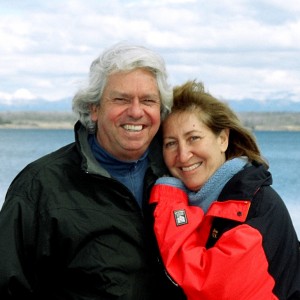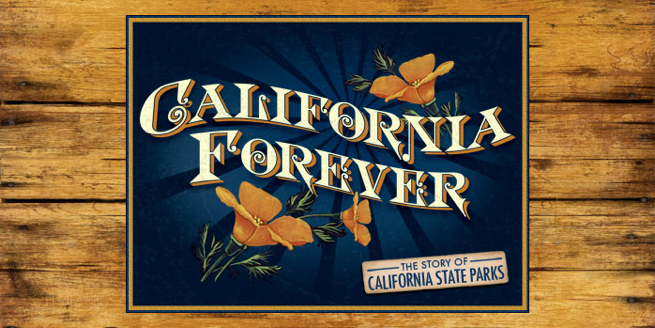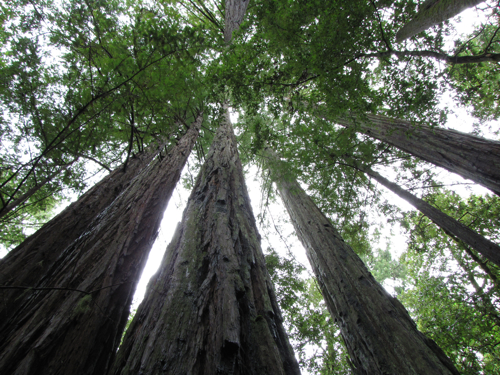Two-Part PBS Special On California State Parks
December 18th, 2012
Podcast: Download (Duration: 37:09 — 51.0MB)
An Appreciation of California’s State Parks Legacy
When the state of California set aside Yosemite Valley for protection as a park in 1864, it marked the auspicious beginning of California’s state park system, and the beginning of the idea of preserving a landscape and an environment as a wholly protected, public place. As California grew and began to set aside other special places like Big Basin Redwoods and Calaveras Big Trees for protection, the California State Park system became the model upon which the National Park Service would eventually be built.
Today, nearly 150 years after President Lincoln first set aside Yosemite Valley for the state of California to manage, mounting challenges continue to confront California’s revered state park system. Tightening budgets, deferred maintenance, destructive recreation, and apathetic attitudes continue to take their toll on California’s state parks, and the myriad of responsibilities and obligations park managers have to the citizens of the state, as well as the plants and animals which make the parks their home, continues to grow more complex.
Addressing not only the history of California’s state parks, but the challenges this unique park system faces today, filmmakers David Vassar and Sally Kaplan of Backcountry Productions talk about their two-part California Forever documentary on California State Parks, which recently aired on PBS stations around the nation.
Every Park A Unique Jewel, Every Park Uniquely Californian
As fans of Treehuggers International know, one of the show’s priorities over the last five years has been to preserve the sanctity of California’s stunning state park system, and ensure it remains funded and open to the public.
Maintaining the integrity of California State Parks is critical, not only for the environmental, physical and mental well-being of Californians, but as a template for similar park and open space networks around the nation.
Regrettably, as is the case with dozens of state agencies, California has seen the budget for state parks slashed, starved and strangled over the years in the name of fiscal responsibility and putting the state’s financial house in order. While recent passage of Prop. 30 may ease the immediate financial strain, the fallout from the passage of Prop. 13 in 1978 continues to come at the expense of the quality of life built in California in the post-war era by leaders like Pat Brown, Ronald Reagan and others.
Along with investments in education and infrastructure following World War II, Californians have also enjoyed an abundance of phenomenal state parks in every corner of the state. While we may no longer be in an era of an expanding economy, the parks remain, soothing the anxiety of city dwellers with peace and solace, and providing habitat for some of California’s most magnificent flora and fauna at a wholly reasonable public expense.
Even with a highly-effective law-enforcement component, the annual budget of California State Parks takes up less than one-half of one percent of the state’s entire general fund.
When Times Were Toughest, California’s Parks Grew
Despite the current recession, it’s worth noting California grew it’s state park system during the Great Depression, and with the help of New Deal programs like the Works Progress Administration and Civilian Conservation Corps, three of San Diego County’s most iconic state parks were dedicated at the height of the Depression in 1933: Cuyamaca Rancho, Palomar Mountain, and the massive, iconic Anza-Borrego Desert State Park.
The lesson to be drawn from the 1930s is clear. Even at the nation’s worst economic moment, California leaders were unwilling to sell short the volume of environments, landscapes, habitats, and historic resources within the Golden State. Instead of seeking to find ways to close parks, state leaders worked tirelessly to create more.
Over the years, many of these state parks have also proven to be durable economic machines for nearby towns and communities. During the height of the state park closure crisis, a Sacramento State University study determined California State Parks bring in, on average, upwards of $2.00 for every $1.00 of tax dollars spent to local communities. That’s a significant return on any investment.
What’s missing is the will of elected officials to preserve a phenomenal park network built over decades, with significant amounts of park property often entrusted to state care by California families.
The famous, if not quite Balkanized, north-south split among the state’s residents may also inhibit a greater appreciation of the natural, cultural and historic resources protected in either end of the state within the overall state park system.
Treehuggers International has frequently referred to California’s state park system as the “envy of the nation.” It will continue to do so, as long as the public is able to experience places like Pfeiffer Big Sur, Mt. Tamalpais or Red Rock Canyon.
A Two-Part Film About California’s State Park Treasures
 From Jedediah Smith and Humboldt Redwoods to Point Lobos and Montaña de Oro to all the parks of the Gold Country and the beaches of Southern California to Anza-Borrego, and historic locales like Marshall Gold Discovery, Allensworth, and Fort Tejon, California State Parks are outstanding treasures and outstanding resources.
From Jedediah Smith and Humboldt Redwoods to Point Lobos and Montaña de Oro to all the parks of the Gold Country and the beaches of Southern California to Anza-Borrego, and historic locales like Marshall Gold Discovery, Allensworth, and Fort Tejon, California State Parks are outstanding treasures and outstanding resources.
Filmmakers David Vassar and Sally Kaplan and their production company, Backcountry Pictures, recently produced a two-part documentary on California State Parks presented by KQED public television in San Francisco, called California Forever: The Story of California State Parks.
The film continues to air on PBS stations around the nation. Consult your local listings, or go to the California Forever website.
More about this post at:
- California Forever
- Backcountry Pictures
- Landis Communications
- California State Parks
- California State Parks Foundation
- Save Our State Parks
- The Story of California’s State Parks Premieres Nationally In Fall 2012 (Shoot Online; 8/21/12)
- California’s State Parks On the Rocks (The California Report; 8/6/12)
- The Unlikely Rescue of California State Parks (Blue Mountain Eagle; 8/4/12)
- Donors Who Bailed Out California State Parks Want Their Money Back (San Jose Mercury News; 7/26/12)
- Most California State Parks Escape Ax, But Are Not Out of the Woods (San Francisco Chronicle; 7/26/12)
- Hidden California State Parks Fund Sparks Outrage (Sacramento Bee; 7/21/12)
- Four California State Parks Get A Reprieve (Los Angeles Times; 6/30/12)
- California Parks Get Reprieve, Won’t Close Sunday (San Jose Mercury News; 6/28/12)
- Most California State Parks Spared from Closure (KCET; 6/28/12)
- Portola Redwoods Saved for Now (Half Moon Bay Review; 6/25/12)
- Saving California State Parks: The End of Public Funding (NPR; 6/20/12)
- Creative Solutions Keep Some State Parks Open (Bay Citizen; 4/2/12)
- A Penny-Foolish Plan for California State Parks (Los Angeles Times; 3/17/12)
- Local Group Hopes Donations Will Save State Park (KGTV; 3/13/12)
- Shuttered California State Parks May Be Vulnerable to Vandalism (Los Angeles Times; 2/25/12)
- California Forever Film Draws Rave Reviews (Calaveras Enterprise; 2/21/12)
- Jared Huffman Calls for An Overhaul of the State Parks System (Santa Rosa Press-Democrat; 2/4/12)
- Celebrating State Parks, One Big Tree At a Time (Calaveras Enterprise; 2/3/12)
- State’s Park Closure Criteria Murky, Assembly Panel Told (Sacramento Bee; 11/2/11)
- Three California State Parks to Stay Open Thanks to U.S. Move (San Francisco Chronicle; 10/6/11)
- Sunset for Desert State Parks (KCET; 5/18/11)











